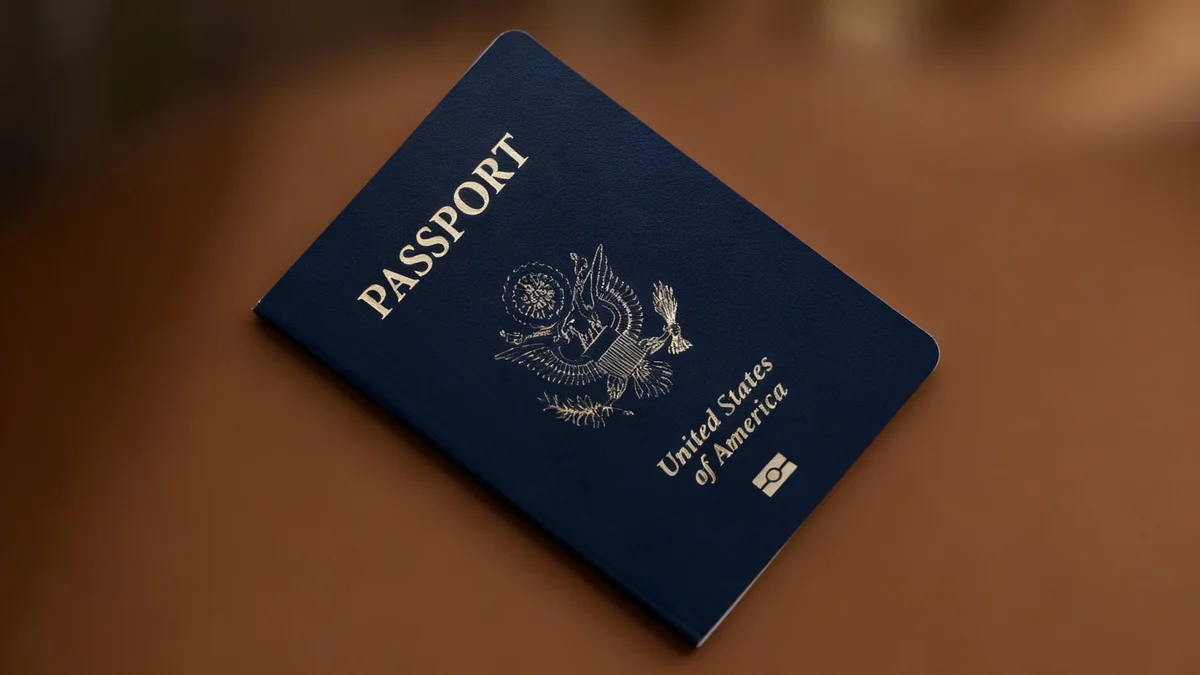A new federal rule, effective this month, requires airlines to disregard gender-neutral 'X' sex markers on U.S. passports during check-in. Instead, airline staff must replace the 'X' with either an 'M' for male or an 'F' for female for passenger records.
This directive impacts U.S. passport holders who have utilized the 'X' marker since 2022. The gender-neutral option was introduced to recognize individuals who do not identify as male or female, including nonbinary, intersex, and gender-nonconforming individuals.
Key Takeaways
- Airlines must now change 'X' passport markers to 'M' or 'F' at check-in.
- The 'X' marker has been available on U.S. passports since 2022.
- This change affects nonbinary, intersex, and gender-nonconforming travelers.
Understanding the 'X' Gender Marker on Passports
The introduction of the 'X' gender marker on U.S. passports in 2022 marked a significant step forward for inclusivity. This option allowed individuals to obtain official travel documents that accurately reflected their gender identity, moving beyond the traditional binary of male or female.
For many, this was a crucial acknowledgment of their rights and identities. It provided a sense of validation and reduced potential complications when traveling internationally.
Background on Gender Markers
Historically, passports have only offered 'M' or 'F' options for gender. The U.S. Department of State began offering the 'X' gender marker as part of a broader effort to promote equity and inclusion for all Americans, regardless of their gender identity. This policy change aimed to align U.S. travel documents with those of several other countries that already offer nonbinary gender options.
The New Federal Directive for Airlines
Under the new federal rule, airlines are no longer permitted to accept the 'X' gender marker as it appears on a passport for their check-in systems. When a passenger presents a passport with an 'X' marker, airline personnel are now mandated to internally assign an 'M' or 'F' to that passenger's record.
This requirement applies specifically to the check-in process. It creates a discrepancy between the official government-issued travel document and the airline's internal passenger manifest.
"The directive means a traveler's official passport may state 'X', but their airline boarding pass or internal record will reflect either 'M' or 'F'," explained a travel industry analyst.
Impact on Travelers
- Passengers with 'X' passports will still be able to travel.
- The change primarily affects how airlines process passenger data.
- Potential for confusion at check-in or security checkpoints may arise.
Reasons Behind the Policy Change
While the exact reasons for this specific federal rule are still being clarified, it is understood to stem from complexities in global travel systems. Many international aviation and border control systems are built around a binary understanding of gender.
This can lead to challenges in data exchange between airlines, foreign governments, and security agencies. The new rule may be an attempt to standardize data within the airline sector to ensure compatibility with these older systems.
It is important to note that this rule does not invalidate the 'X' gender marker on U.S. passports. The passports themselves remain valid documents for travel. The change focuses on how airlines record and transmit passenger information.
Navigating International Travel with 'X' Passports
Travelers with 'X' gender markers on their passports should be aware of this new airline procedure. While the U.S. government recognizes the 'X' marker, some foreign countries may have differing policies regarding gender identification on travel documents.
It is always advisable for travelers to research the entry requirements and any specific gender identity policies of their destination countries. This can help prevent unforeseen issues upon arrival or departure.
Global Landscape of Gender Markers
Several countries worldwide offer nonbinary gender options on official documents. For example, Canada, Australia, Germany, and India are among the nations that have adopted gender-inclusive policies for passports or other identification. This global trend highlights an evolving understanding of gender identity in official documentation.
Looking Forward: Traveler Experience and Advocacy
The implementation of this new rule could lead to a mixed experience for travelers. While the U.S. government maintains its commitment to inclusive gender markers, the airline industry's operational adjustments introduce a layer of complexity.
Advocacy groups are closely monitoring the situation. They aim to ensure that the rights and dignity of nonbinary, intersex, and gender-nonconforming individuals are upheld throughout the travel process. Clear communication from airlines and federal agencies will be crucial to minimize confusion and ensure smooth travel for all passengers.
Passengers may find it helpful to carry additional identification or documentation if they anticipate questions regarding their gender identity during their journey. This proactive approach can help alleviate potential misunderstandings at various checkpoints.
- Always check current travel advisories for your destination.
- Be prepared for potential questions regarding gender identification at check-in.
- Stay informed about updates from airlines and government agencies.





